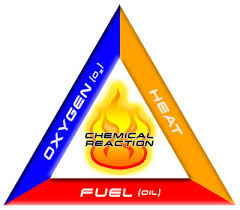Pyrolysis is not incineration or burning of the plastics. In order for something to burn there must be four elements commonly known as The Fire Triangle/Tetrahedron (A pyramid)

1. Oxygen
2. A heat source
3. A fuel that will burn
4. A chemical chain reaction
Without all four there can be no combustion which is why Pyrolysis is ideally suited to converting waste plastics into energy as the process operates in the absence of oxygen
Pyrolysis involves subjecting the plastics to a temperature of 400 to 450 degree Celsius in a sealed, oxygen free chamber. During pyrolysis the plastics break down into smaller molecules of pyrolysis oil, pyrolysis gas and carbon black. Pyrolysis end products are hydrocarbons, effectively returning the plastics to their original raw material state.
Some of the pyrolysis gas is used to maintain the temperature of the process; this is called the parasitic load.
The remainder of the Pyrolysis gas and the Pyrolysis oil can be used as a liquid fuel for various applications including running generators for producing electricity.
Further refining can produce valuable commercial chemicals
The Carbon Black can be reused in various applications in tyre and plastic manufacturing industries.
